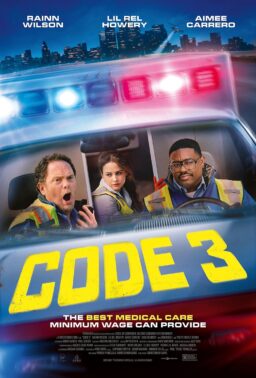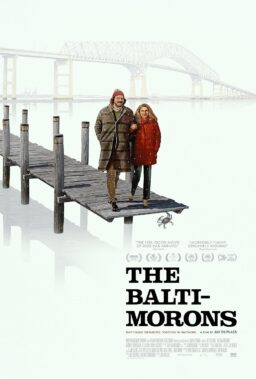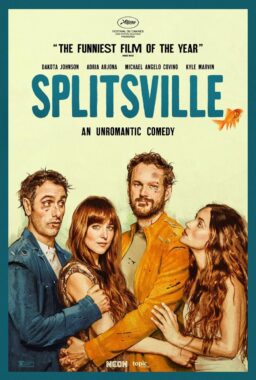Ebert’s Best Film Lists 1967 – present
For sheer gall and raw filmmaking skill, if for no other reason, Oliver Stone’s audacious reopening of the Kennedy assassination was the year’s best film. Attacks on its accuracy are beside the point; it is a rabble-rouser designed to shock audiences into agreeing with Stone and many others that Kennedy may have been the victim of a conspiracy. In an incredible three hours of words and pictures, Stone never says exactly who he thinks killed Kennedy, but he makes a persuasive case for the theory that it could not have been Lee Harvey Oswald, acting alone. The movie is a technical marvel; an automatic Oscar should be voted to Joe Hutshing and Pietro Scalia, who edited its rush of images. And another one should go to Joe Pesci, whose supporting performance as a conspirator is a case study in nerves. Kevin Costner supplies the sound, trustworthy center to the film, as New Orleans D.A. Jim Garrison. Stone’s critics said Costner makes Garrison seem heroic when actually he was a much more controversial character. But Stone isn’t making an autobiography; he uses Garrison more as a device for organizing his material. No matter what you think about the politics of “JFK,” it’s impossible to deny the film’s artistry, as it uses its big canvas and enormous ambition to re-create a turning point in American history, a shocking death that seemed to open the floodgates for so many tragic events to follow.
The headlines from America’s troubled inner cities so often show only the bad things that happen there, in images that deny the humanity of the citizens who live there. John Singleton’s film provides faces and lives, in its story of a black teen-ager (Cuba Gooding Jr.) whose father (Larry Fishburne) is determined he won’t be claimed as a victim of street violence. He and his friends have steered clear, more or less, of the gangs that operate in the neighborhood. But there is always the possibility that words will lead to insults, that insults will lead to a need to “prove their manhood,” that with guns everywhere, somebody will be shot dead.
The movie is a thoughtful, realistic look at a young man’s coming of age, and also a human drama of rare power — Academy Award material. Singleton is a director who brings together two attributes not always found in the same film: He has a subject, and he has a style. The film is not only important, but also a joy to watch because his camera is so confident and he wins such natural performances from his actors.
The new animated feature from the Walt Disney studios recalls the greatness of such past classics as “Snow White and the Seven Dwarfs” and “Pinocchio,” and builds on the breakthrough of last year’s “The Little Mermaid.” This is animation at its best, with all of the freedom and visual excitement of characters who are liberated from the rules of time, space and gravity. They dance about the screen in wildly creative choreography. And the screen musical — which in its live-action form seems moribund — gets new life here with the songs by Howard Ashman and Alan Menken. There seems to be some sentiment for nominating “Beauty and the Beast” as one of the year’s best films. This would be a tremendous boost for the prestige of animated films, which are always relegated to a sort of cinematic ghetto, even though so many people love them. What “Beauty and the Beast” proves, once again, is that animation can be as funny, as thrilling and as powerful as live-action, and wildly creative on the visual level. When Disney made his first animated feature, “Snow White and the Seven Dwarfs,” the great Soviet director Sergei Eisenstein called it one of the greatest films ever made. He did not consider “cartoons” to be fit only for children. Neither should we.
Lawrence Kasdan’s new film, written with his wife, Meg, tells the story of a few big-city residents who take off their blinders and look around at their fellow men. The movie stars Kevin Kline as a businessman who is rescued from a mugging by Danny Glover, and then makes a decision to get to know Glover (simply because he might be dead if it were not for this man). His act seems infectious; other people arrive at turning points in their lives, including his wife (Mary McDonnell), who wants to adopt a baby; his friend (Steve Martin), who gets shot and decides to stop making violent films; and a casual acquaintance at work (Alfre Woodard), who gets fixed up with Glover and decides it’s the best thing that’s happened to her in years.
The movie is partly about the brooding sense of impending doom felt by a lot of city dwellers; when Kline gives his son a driving lesson, it’s a scene more terrifying than the shoot-outs in a lot of action pictures. And yet beneath the doom there is hope, and a sense of freedom. Kasdan, whose credits include “The Big Chill” and “The Accidental Tourist,” has dealt with death and change before, but never with such liberating optimism.
These two films by Yves Robert tell similar stories two times, first as the narrator remembers his father, then his mother. The films are quiet and warm, and creep up on you with small moments of charm. At first they don’t seem to be about much of anything. They meander. To a viewer accustomed to the machinery of plots, they play like a simple series of episodes. Then the episodes add up to a childhood. And by the end of the second film, the entire foundation for a life has been re-created, in memories of the perfect days of childhood. Of course the films are sentimental. Who would want it any other way?
The films are based on the childhood of Marcel Pagnol, the French novelist and filmmaker whose twinned novels, “Jean de Florette” and “Manon of the Spring,” were turned into wonderful films a few years ago. The new movies are narrated by the hero, Marcel, as an adult. We see him as a young man of 10 or 12. His father, Joseph, is a schoolteacher in the city, and his mother, Augustine, is a paragon of domestic virtue. One summer they journey out to the hills of Provence to take a cottage and spend their vacation. These hills are to become the focus of Marcel’s most enduring love affair. He loves the trees and the grasses, the small birds and the eagle that nests high in a crag, the pathways up rock faces and the way that voices carry from one side of a valley to another. And it is there that he begins to understand who his parents are, and to love them.
Here is a story of courage by the Australian filmmaker Paul Cox, who tells of the dying weeks in the life of an old woman played with great and particular humor and power by Sheila Florance. She still lives with her canary in her own apartment, looks after old Billy, who lives next door and gets himself into trouble, and despairs of the landlord who wants to evict her. She has been assigned a visiting nurse, and as she and the nurse become friends, they share their deepest thoughts, and we learn, yes, that old people think about love and lust as much as young ones. The nurse is having a love affair, and the old lady cheers her on. All the time she knows she is dying, and she insists on dying with dignity in her own home. There is a poignant undertone to the story, because Sheila Florance was also dying as the film was made (she passed away earlier in 1991) and some days was too sick to film, although you would never guess it from this film. Florance won the Australian Academy Award for her performance. (The movie has opened for U.S. Academy consideration in Los Angeles and New York, and will roll out nationally in February.)
The British director Mike Leigh has never made a film that didn’t place on my annual Best 10 list, but there was an enormous gap between his first, “Bleak Moments,” in 1972, and his second, “High Hopes,” in 1989. Although he works much on the British stage, his methods discourage film financiers, because he creates his films in collaboration with the actors; together, over a long period, they invent their characters and dialogue in improvisations.
With “Life Is Sweet,” this method has produced a film of great humor, set in a London suburb, and involving a couple and their twin daughters, who are 20ish. One twin is cheerful and sunny; the other is a gloomy, chain-smoking depressive. The girls are always on each other’s cases, while the father dreams of liberation through a mobile hot dog wagon, and his wife also wants to express herself more fully. In ways as unpredictable as they seem natural, these characters reveal one surprise after another, in a film of wit and humanity.
In another year, with another ad campaign, this film might have been a box-office hit. But the studio didn’t seem to know what it had, and although the film found and began to build an audience, it was swept away by the Christmas releases. Try to find it. Directed by Robert Mulligan (“To Kill a Mockingbird“), it is a perfect marriage of tone and mood, a poem about growing up and learning life’s lessons.
The film takes place on a farm outside a small country town in the 1950s. Two teen-age girls are being raised by parents who are strict, but who are also loving and good. One of the girls, Dani, is 14 years old and has just passed uncertainly into young womanhood. Her sister, Maureen, is about 17. On hot summer nights they sleep on the screened-in porch and have girl-talks, and Dani laments that she will never be as beautiful and popular as her sister. Of course, all kid sisters feel that way. But when they both get a crush on the boy who lives next door, fears become real.
This was one of the best-looking films of the year, a celebration of the American West and a return to the tradition of the Road Movie. It stars Susan Sarandon and Geena Davis as two friends who live lives largely determined by the will of men. One weekend they decide to drive away in a big old T-Bird and have some fun for a change. After Davis is assaulted in a parking lot and Sarandon kills her assaulter, more or less unintentionally, the two women become outlaws, and the movie is the story of how they discover themselves while trying to get lost on the backroads of the Southwest.
Directed by Ridley Scott, the movie is a reminder of such other road pictures as “Easy Rider,” “Bonnie and Clyde” and “Badlands.” But its wide-screen cinematography creates a distinctive world of its own, and there are scenes of great power (as when a drifter coldly wins Davis’ heart and betrays it) and of poetry (Sarandon buys a cowboy hat from a man, as if it contains the mystique of his maleness).
Michael Tolkin’s film goes on my list for two reasons: for sheer heedless audacity, and for a great performance by Mimi Rogers. This is one of those rare films that is specifically about religion, yet not “religious.” It is about a swinger, played by Rogers, who engages in mate- swapping with her boyfriend, and then endures long, boring days as a telephone operator. Then suddenly she undergoes a spiritual conversion, is born again, and begins to await the imminent second coming of Jesus. Watching the film, following its logic, I began to fear it would lose nerve at the end, because this film can really end in only one way, with the world actually coming to an end, and the Rogers character literally being taken into heaven. The movie did not disappoint me — but it did surprise me, because the film is not only about faith, but also about pride, and it is based on the belief that when God created humankind, he provided us with the freedom to make up our own minds, whatever the consequences.
The next 10 of the year’s best films, alphabetically, were: “An Angel at My Table,” Jane Campion’s extraordinary biography of Australian writer Janet Frame, who survived a wrongful diagnosis as a schizophrenic to become a successful writer; Michael Fields’ “Bright Angel,” in a way a companion piece to “Drugstore Cowboy,” with Dermot Mulroney as the teen-age son of a failing marriage, who meets a young woman (Lili Taylor) and joins her in an odyssey to help her jailed brother; Barry Levinson’s “Bugsy,” with its wonderful performances by Warren Beatty and Annette Bening as a starstruck gangster and his moneystruck mistress; Kenneth Branagh’s “Dead Again,” a thriller in the Hitchcock tradition, with the sins of the past overshadowing the sins of the present; Fax Bahr and George Hickenlooper’s startling documentary “Hearts of Darkness: A Filmmaker's Apocalypse,” with its unprecedented behind-the-scenes look at the things that really go on during the making of a movie. Also, David Mamet’s “Homicide,” with Joe Mantegna as a Jewish cop who gets in touch with his own identity while in the middle of two tangled cases; Jacques Rivette’s absorbing “La Belle Noiseuse,” with Michel Piccoli as an old artist who has not painted in years, and Emmanuelle Beart as the muse who inspires him; Mario Van Peebles’ “New Jack City,” with its strong performance by Wesley Snipes as a doomed drug kingpin; Jonathan Demme’s “The Silence of the Lambs,” with the most unforgettable performance of the year, by Anthony Hopkins as a perverse murderer; and George Sluizer’s “The Vanishing,” a chilling thriller in which the audience knows most of what has happened, but not why — or what it will lead to.
It was actually a pretty good year at the movies, I realized as I went through my memories. Among the other moments in the dark I especially enjoyed were those provided by “Antonia and Jane,” about a checkered friendship between two women; “Barton Fink,” with its lurid portrait of Hollywood hopelessness; John Sayles’ “City of Hope,” assembling some 34 characters in a montage of a dying city; “City Slickers,” with its yuppies on a dude ranch; “The Doctor,” with William Hurt finding the shoe on the other foot; “The Double Life of Veronique,” about the mysteries of identity; “Guilty by Suspicion,” with Robert De Niro enduring the Hollywood blacklist; and Mel Gibson as “Hamlet.” French director Agnes Varda made a touching tribute to her late husband, the director Jacques Demy, in “Jacques de Nantes;” the Chinese film “Ju Dou” vibrated with passion; Spike Lee’s “Jungle Fever” showed a man under great family and sexual pressure; Steve Martin’s “LA Story” was whimsical and poetic; Jodie Foster’s “Little Man Tate” gave us a kid who was maybe too smart for his own good; “The Long Walk Home” starred Whoopi Goldberg and Sissy Spacek as women learning to know one another during the Montgomery bus boycott; and “Mortal Thoughts” starred Demi Moore and Bruce Willis in a tangled web of domestic murder. Paul Newman and Joanne Woodward gave brilliant performances in “Mr. and Mrs. Bridge”; young Anna Chlumsky made a brilliant debut in “My Girl“; Gus Van Sant’s “My Own Private Idaho” used Shakespeare’s Falstaff saga as the starting place for a strange film about male hustlers; John Malkovich and Andie MacDowell tried to make ends meet in “The Object of Beauty”; Richard Dreyfuss gave a brilliant offbeat performance in “Once Around“; Danny DeVito and Penelope Ann Miller sparkled and spat in “Other People's Money“; “Point Break” was a stylish, offbeat thriller; in “Slacker,” the camera followed first one and then another character through the demimonde of Austin, Texas; “Soapdish” had lots of fun with the world of soap opera; the special effects made “Terminator 2” one of the best of the Schwarzenegger epics; and Madonna let the cameras backstage in “Truth or Dare,” even if backstage still felt a lot like a performance.











